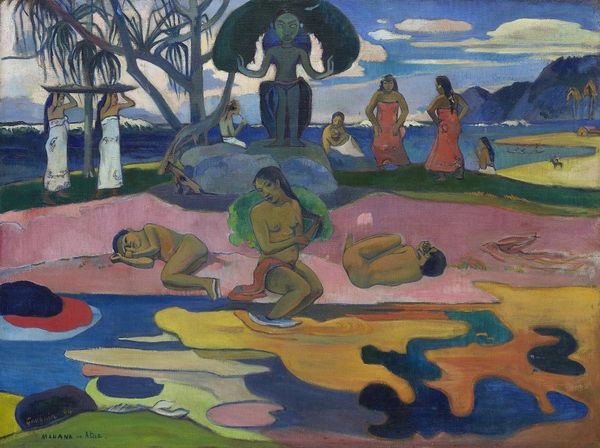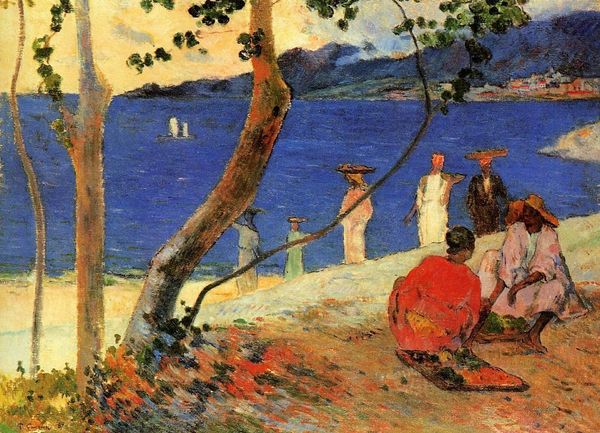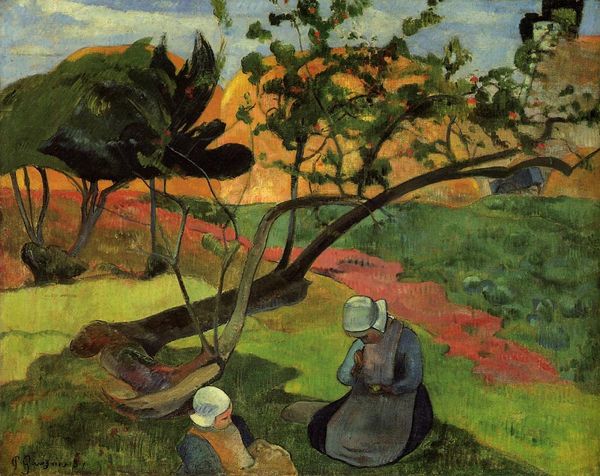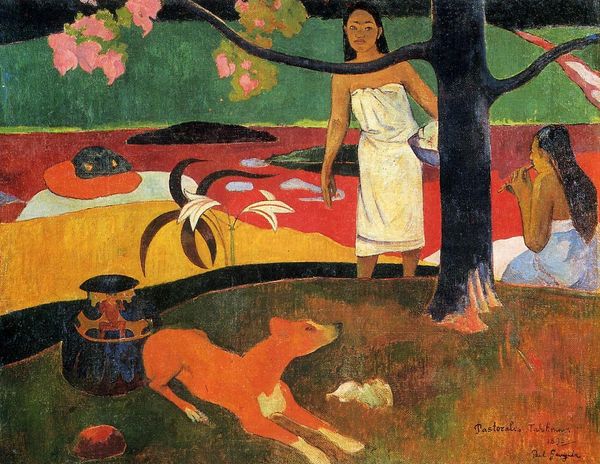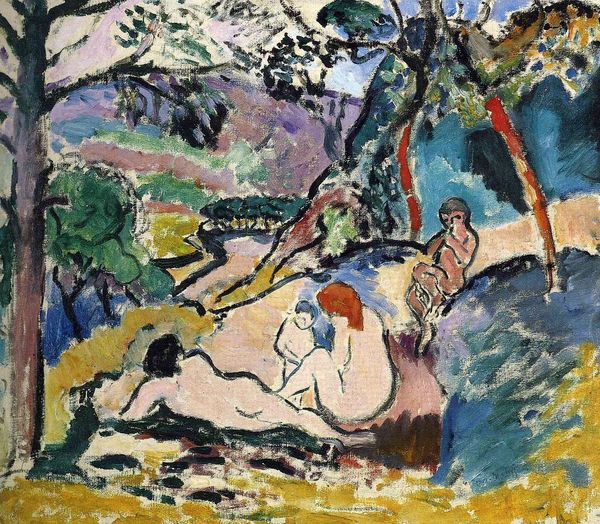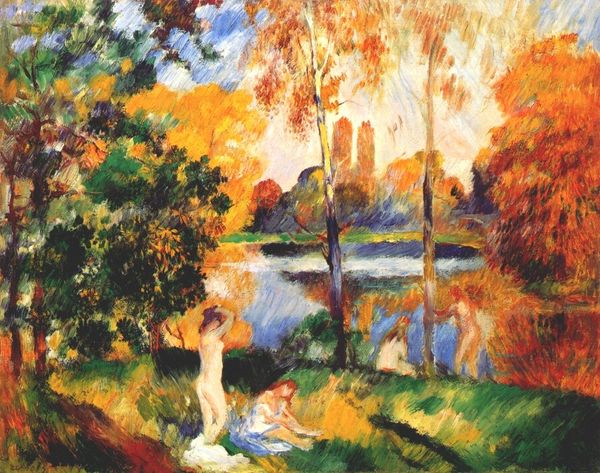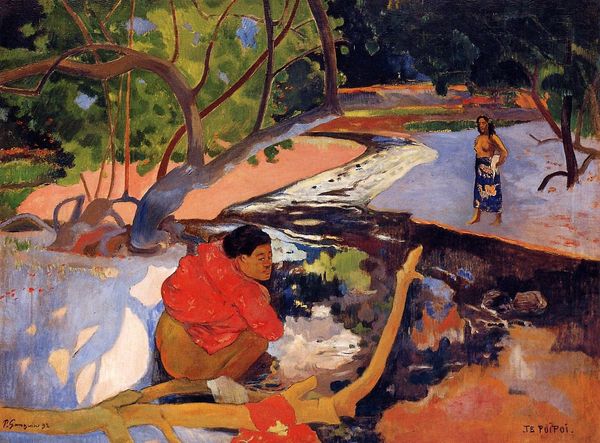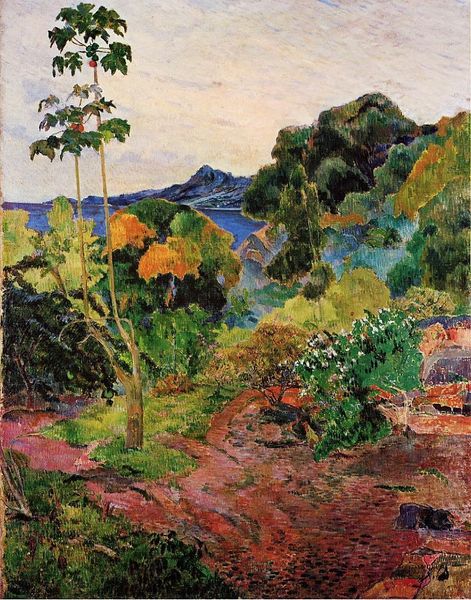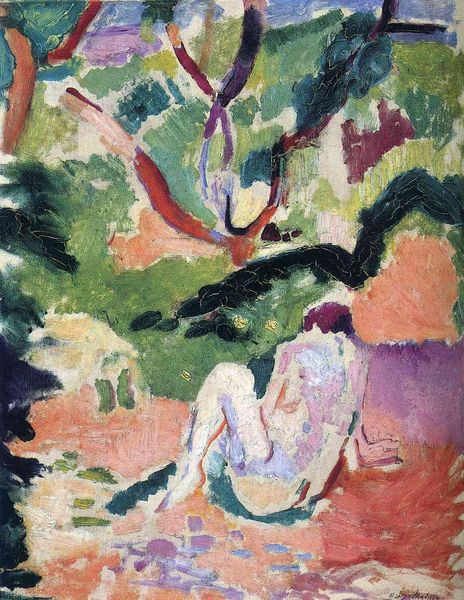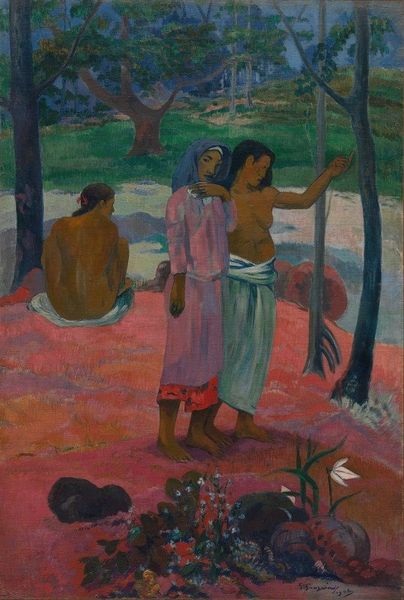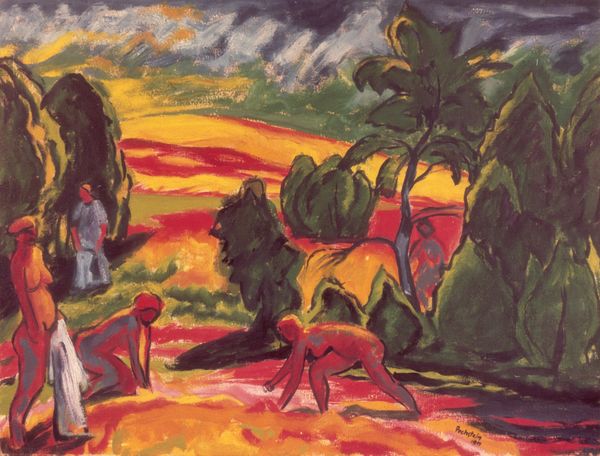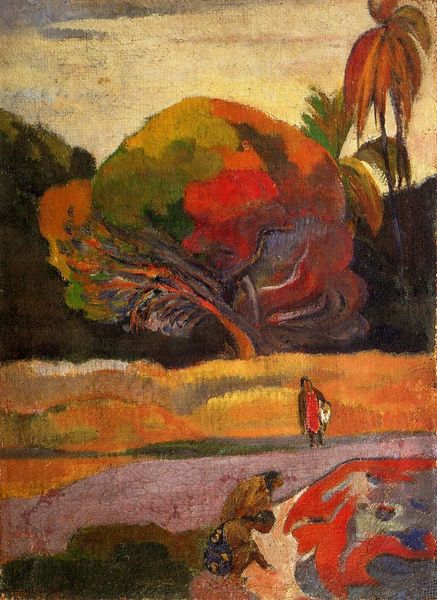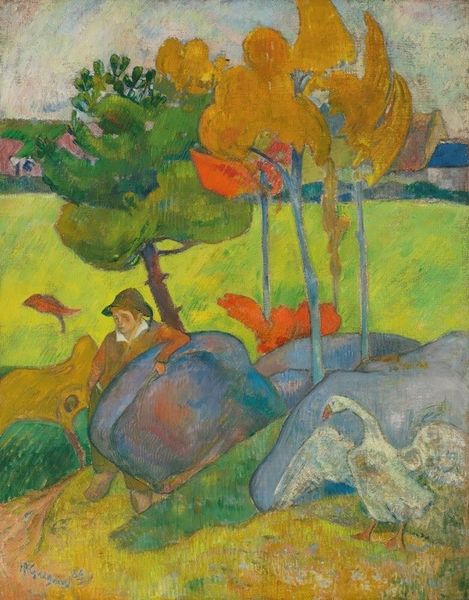
She goes down to the fresh water (Haere Pape) 1892
0:00
0:00
paulgauguin
Barnes Foundation, Philadelphia, PA, US
painting, oil-paint
#
portrait
#
tree
#
painting
#
oil-paint
#
landscape
#
figuration
#
oil painting
#
folk-art
#
naive art
#
orientalism
#
water
#
symbolism
#
post-impressionism
#
nude
Dimensions: 91.2 x 66.4 cm
Copyright: Public domain
Paul Gauguin made “She goes down to the fresh water” in 1892, using oil on canvas. This work exemplifies Gauguin's artistic project after he moved to Tahiti, one that was built on romanticized and colonial perspectives of the island and its inhabitants. The painting depicts a Tahitian woman near a body of water. Gauguin sought to portray an untouched, exoticized version of Tahitian life. But this was far from the truth. By the 1890s, Tahiti had already been subjected to significant European colonial influence, and as such, the artist's representation of it was a construct. Gauguin himself was seeking refuge from the social and artistic conventions of Europe, yearning for what he saw as a simpler, more authentic existence. "She goes down to the fresh water" reflects the complex interplay between desire, fantasy, and cultural appropriation. This all comes into play while considering the woman’s direct gaze, which challenges viewers to consider the power dynamics inherent in the act of looking. Despite its problematic origins, the work remains a potent symbol of cultural encounter and the artist's own search for meaning.
Comments
No comments
Be the first to comment and join the conversation on the ultimate creative platform.
